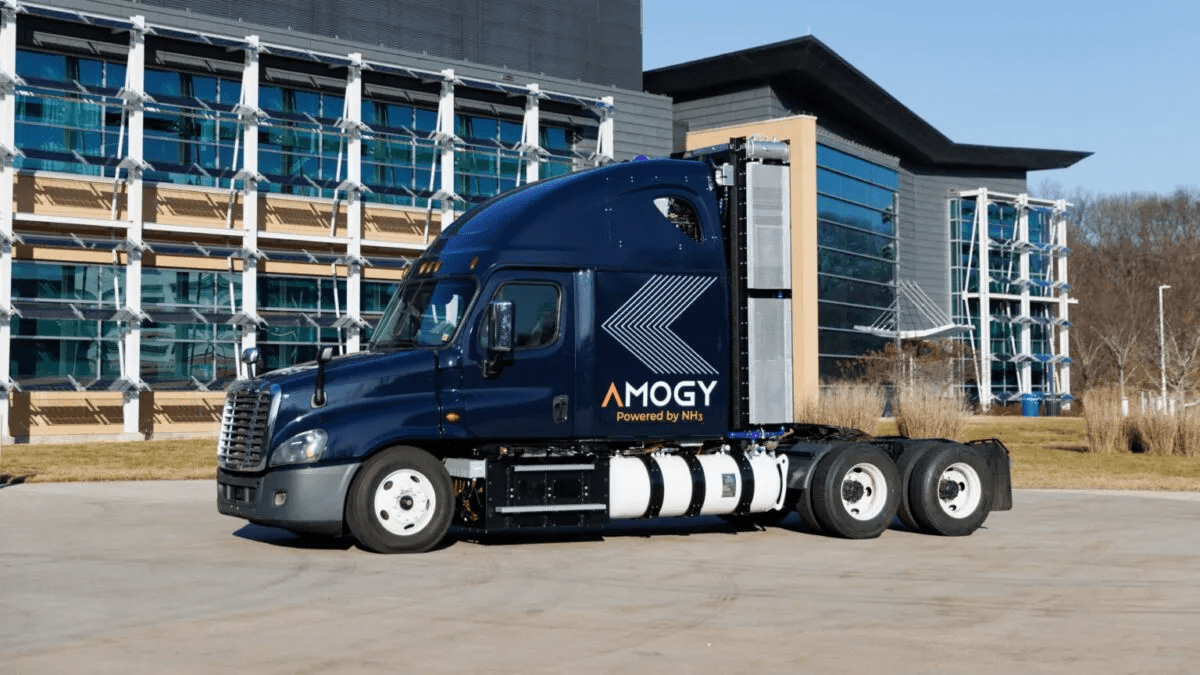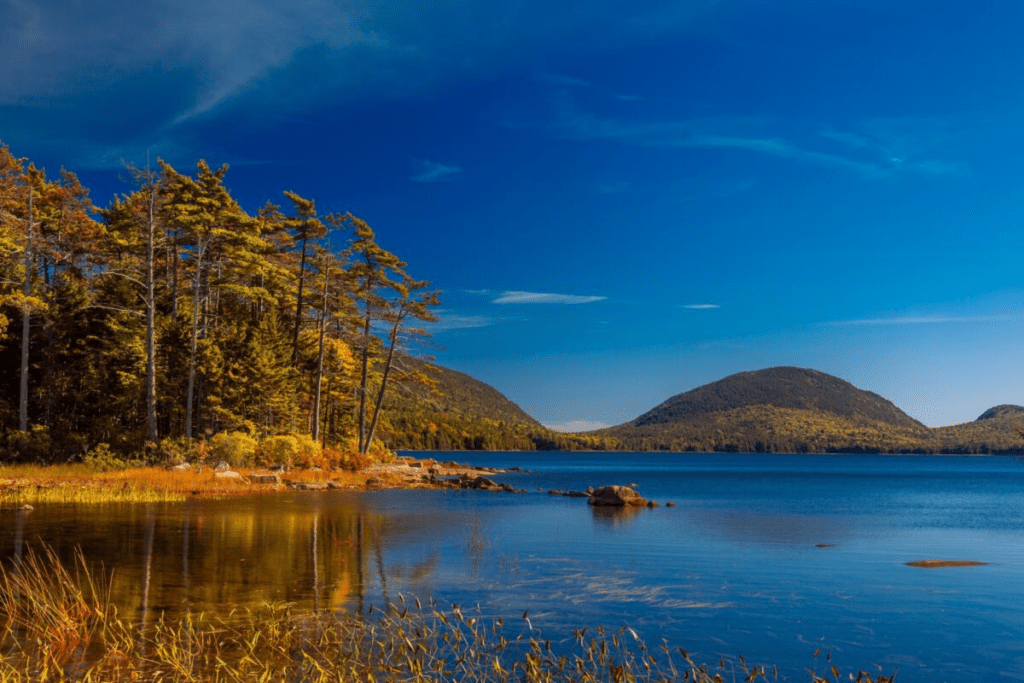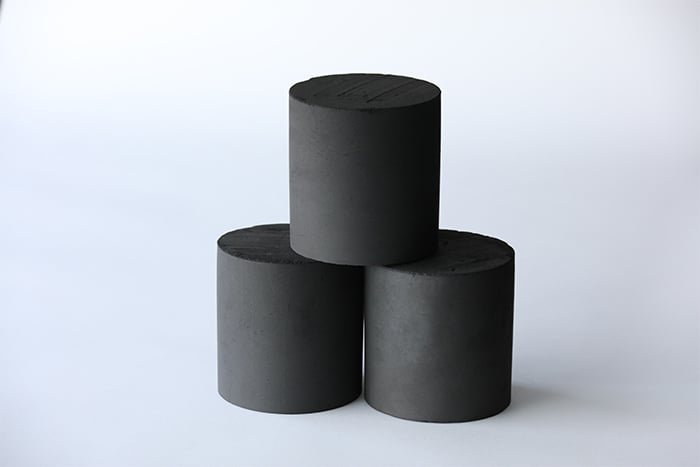A start-up by four MIT Ph.D. Graduates, Amogy, has successfully tested a zero-emissions semi-truck powered by sustainable ammonia fuel. The customized Freightliner Cascadia truck went on a test run inside the Stony Brook University campus in New York. The custom setup managed to accumulate 900 kilowatt hours of total stored energy after eight minutes of fueling. Ammonia has an abundance of nitrogen & hydrogen compounds making it a promising base for green fuel. After combustion it does not emit any carbon pollution and is easier to store and transport. The only byproducts of its usage are nitrogen and water. The customized truck presented by Amogy is probably the world’s first ammonia-powered, zero-emissions semi-truck. It also outperforms batteries because it has five times the system-level energy density of batteries.
Hydrogen fuel cells are considered as the future of energy for the shipping industry, but in comparison, ammonia has numerous advantages. Firstly, ammonia can exist in a stable state as liquid at room temperature making its shipping and storage easier than hydrogen. Secondly, Amogy believes that ammonia has immense potential as a zero-carbon fuel for all heavy-duty transportation sectors.
“Beyond its incredible energy-density and liquid phase at an ambient temperature, ammonia is an optimal fuel to achieve rapid decarbonization of heavy transportations because it is available globally with existing infrastructure already in place,” stated Seonghoon Woo, Chief Executive Officer at Amogy. “This achievement not only showcases Amogy’s technology as an accessible and scalable solution for trucking, it also highlights the capabilities and dedication of our outstanding team. First it was an ammonia-powered drone, then a tractor and now a truck. In the near future, we look forward to further scaling and tackling other hard-to-abate sectors, such as global shipping.”
Transportation is one of the highest carbon emitting sectors in the United States, representing 27% of overall greenhouse gas emissions. Quarter of these emissions are coming from medium- and heavy-duty trucks. There are some other players who are working on ammonia based fuel sources like Hydrofuel Canada, GenCell Energy, and Starfire Energy, to name a few. The development of ammonia-powered trucks by Amogy and others who are pushing forward the ammonia fuel technology can make a big difference in environmental pollution levels globally
The EPA has presented two separate pathways to effectively decrease nitrous oxide (N2O) emissions in the trucking industry. N20 accounts for just 7% of emissions but has a 300 times stronger warming impact than CO2. N20 also manages to linger around in the environment for more than 100 years. The new EPA standards are more than 80% stricter than 2021 versions. It plans to increase the lifespan of governed vehicles by 1.5 to 2.5 times and yield emissions warranties that are from 2.8 to 4.5 times longer compared to the current standards.
The Ammonia Energy Association is a trade group that “promotes the responsible use of ammonia in a sustainable energy economy,” and has over 100 members, including Amogy. These members are developing sustainable ammonia fuel technology, which can help in reducing the carbon footprint from the most fuel-intensive and high-emissions industries. Green ammonia is only as clean as the energy used to make it, but it holds great promise for decarbonizing transportation.
- Wegmans Chocolate Recall Affects 9 States: What to Check on Your Package
- Wild Orangutans Take Power Naps After Poor Sleep, 14-Year Study Reveals Surprising Human Parallels
- Geely EX5 Electric SUV Enters Greece as Chinese EV Sales Surge 1423% and Market Grows 13.9%
- Endangered Secretary Bird Chick Thrives at Longleat as Wild Population Falls Below 10,000
- 8-Foot Shadow Werewolf Photographed in Bridlington’s Danes Dyke Woods by Paranormal Expert
The pioneering efforts in ammonia-powered trucks by Amogy and other corporations offer a hopeful path towards a no pollution environment. This will eventually contribute to avoiding the worst impacts of climate change. If transportation accounts for 27% of greenhouse gas emissions in the United States, a progressive transformation of the transport industry is essential in countering the climate crisis in the country. The development of green ammonia is a vital step towards this transformation, because finding a sustainable alternative to conventional fuel is the need of the hour.
.


















